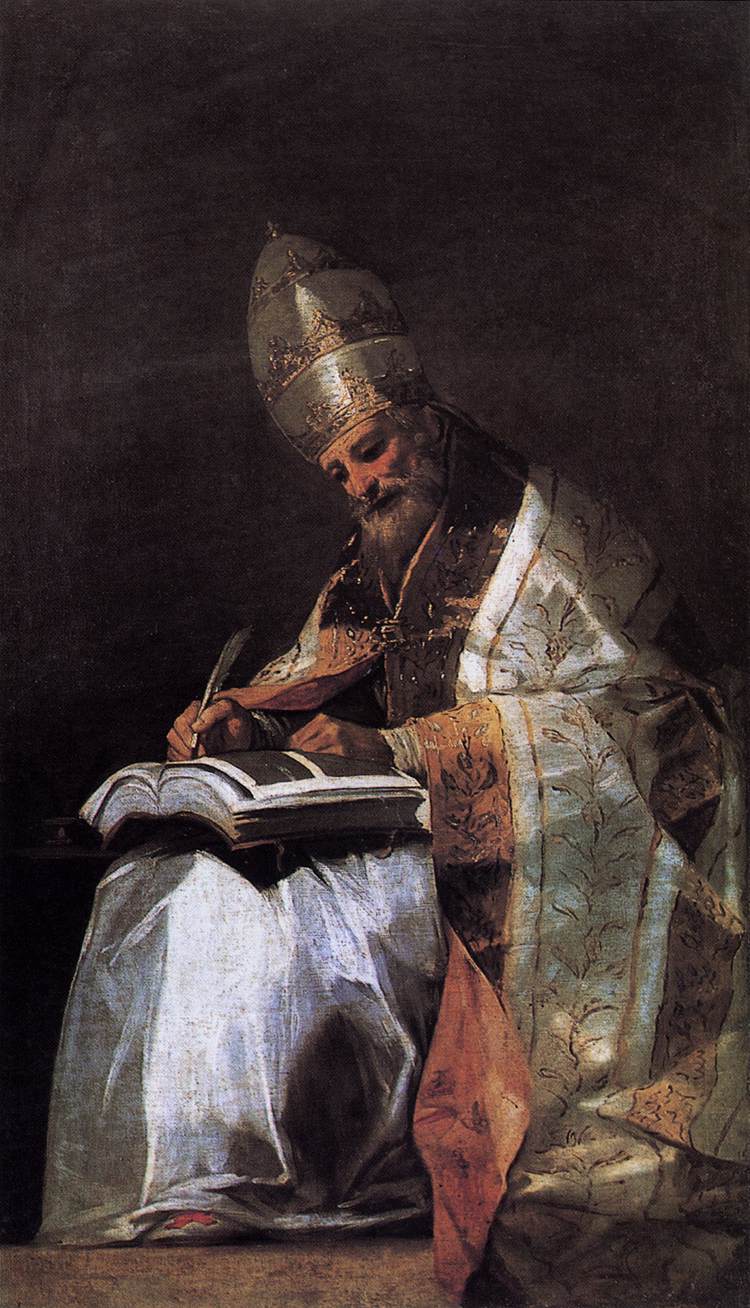Today’s guest post is by Brandon Rappuhn, a Logos marketing copywriter.
 Born in the wake of the Western Roman Empire’s fall, St. Gregory the Great was a man who truly stood between worlds. He was born in AD 540, at the very end of the classical era, when Latin would soon pass away and medieval languages would rise in its place. As a child, he saw the Goths retake and pillage Rome, only for it to be liberated again by the Eastern Roman Empire. Although born into a wealthy family, he favored the monastic life. And despite having an outstanding aptitude for business and public affairs, he all but hated being pulled into the papacy. From this unique vantage between dichotomic worlds, St. Gregory was amply prepared for his rule as pope in one of Rome’s most uncertain eras.
Born in the wake of the Western Roman Empire’s fall, St. Gregory the Great was a man who truly stood between worlds. He was born in AD 540, at the very end of the classical era, when Latin would soon pass away and medieval languages would rise in its place. As a child, he saw the Goths retake and pillage Rome, only for it to be liberated again by the Eastern Roman Empire. Although born into a wealthy family, he favored the monastic life. And despite having an outstanding aptitude for business and public affairs, he all but hated being pulled into the papacy. From this unique vantage between dichotomic worlds, St. Gregory was amply prepared for his rule as pope in one of Rome’s most uncertain eras.
The Monk Who Ruled Rome
Pope Gregory I was the first pope to come from a monastic background. In Morals on the Book of Job, his famous commentary on Job, he expresses his disdain for public affairs and his preference for a life dedicated to prayer, solitude, and meditation. But Rome would not allow him to sit idly by. Centuries of war and plague left Italy in a state of economic ruin. Immediately after accepting office in AD 590, Pope Gregory used the Church’s widespread riches and properties to fund the restoration of Rome’s economy and demonstrated an unmatched skill in financial micromanagement. He imported food and textiles to Rome and organized monks to distribute the goods to the poor, especially the diseased and disabled. In doing so, Pope Gregory lived out our Lord’s teachings in Luke 12:33. What he is most recognized for, however, is his conversion of England to Christianity.
The Gregorian Mission
Upon an encounter with Anglo-Saxon slave children from England being traded in the Roman Forum, Gregory approached the pale-skinned children, famously saying, “Non Angli, sed angeli” (“not Angles, but angels”). When Gregory discovered that their homeland was pagan, his heart broke for them, and although he wouldn’t become pope for several decades, he would carry the memory of this experience until he could act on it.
Pope Gregory I focused much of his papacy on sending missions to England to bring it under the Fold of Christ. In AD 596, he sent Augustine of Canterbury and 40 missionaries on an evangelical mission to England. Augustine discovered pockets of unorganized Celtic Christianity throughout England, as well as local pagan polytheistic religions, and was surprised to see them quickly converting to Catholicism. Pope Gregory I and Augustine of Canterbury are widely recognized today as responsible for the centuries of sustained Roman Catholicism in England.
Roughly a hundred years later, St. Bede the Venerable chronicled the correspondence between Augustine of Canterbury and St. Gregory the Great in his Historical Ecclesiology of the English Nation. Skip ahead to chapter 27 and read it for yourself—a firsthand account of the earliest missionaries to England from the sixth century AD.
The Mission Is God’s Alone
I think our daily readings today are fitting for celebrating the Feast of St. Gregory the Great. If you have the Catholic Lectionary, you can find an assurance for missionaries in today’s readings, through the words of St. Luke the Evangelist and of St. Paul the Apostle. Keep reading Scripture using Logos—you’ll find so much more.





